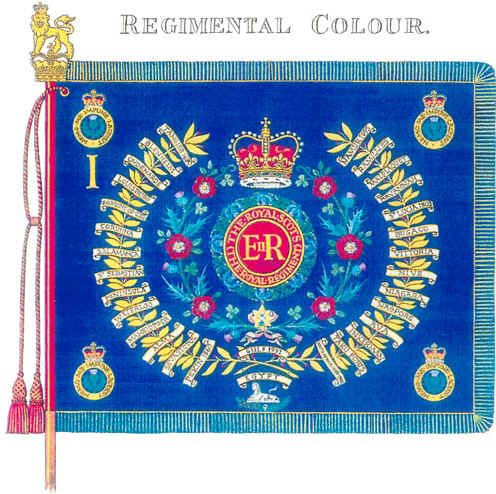 |
| Category: Flags |

|
This page is a sub
category index |
|
|
|
| The
Queen's & Regimental Colours; a history |
"A moth-eaten rag on a
worm-eaten pole
It does not look likely, to stir a mans soul
'Tis the deeds that were done neath the moth-eaten rag
When the pole was a staff, and the rag was a flag"
- Sir Edward Hamley
|
 |
1st Colour, First Colour, Royal
Colour, Senior Colour, Sovereign's Colour, King's Colour, Queen's Colour
all refer to the same thing.
2nd Colour, Second Colour, Regimental
Colour, Company Colour, Battalion Colour, Junior Colour all refer to the
other colour.
2 Colours together are called a Stand
of Colours
|
 |
|
The Sovereign's and
Regimental Colours |
- The idea of a military unit having
a distinctive flag goes back 5,000 years. From that has grown the
practice of Australian fighting units having what is called the
King's ( or Queen's as the case may be) and Regimental
Colours.
- It is a practice that we borrowed
from the British Army.
- To explain their history which is
the foundation of ours I have chosen the Unit known as
|
|
The Royal Scots
(The Royal
Regiment)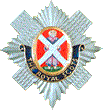
Their history is one of
continual service since 1633 with the only major change being the number
of Battalions in service at any one time. That differs from the Australian
way of raising a Force, helping to win the war and then disbanding that
Force.
However since the end of WW2 Australia has decided to maintain a
small standing Army and so the matter of The Colours is more important. |
| The
Royal Scots (The Royal Regiment) is the
oldest Line Regiment in the British Army and as such is the senior Infantry
Regiment of the Line. (That also makes it the
senior Infantry Regiment of the Empire and/or Commonwealth.)
It was raised in 1633 when Sir John Hepburn, under
a Royal Warrant from King Charles I, recruited 1200 men in Scotland. The
first battle honour awarded to the Regiment was Tangier 1680, since when
a further 148 have been gained in a history which has involved them in
almost every campaign the British Army has fought; the last being the
Gulf War 1991.
|
- The Queen’s Colour is a reminder
to all ranks of their loyalty and duty to their sovereign and their
Country.
- The Regimental Colour is a symbol
of Regimental tradition and of the duty owed by each member to the
Regiment.
|
|
 |
|
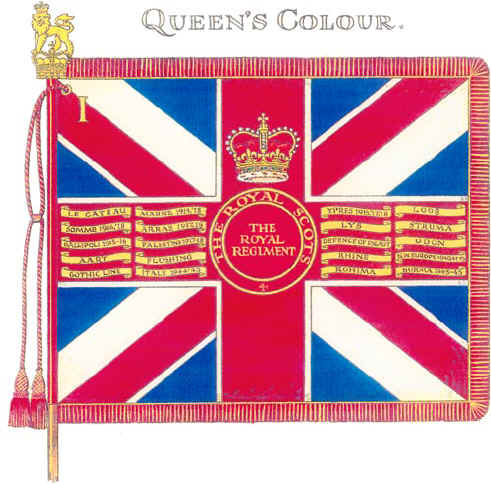 |
|
|
|
|
|

Sub category index
|
|
BATTLE HONOURS
-
It is traditional
that a Regiment's Battle Honours are embroidered on the Regimental
Colours, but it is not physically possible to carry them all. The
Royal Scots (The Royal Regiment) has been awarded 149 Battle
Honours. All 29 Honours awarded before the First World War are borne
on the Regimental Colour as is the one awarded since 1945.
-
The Queen's Colour
contains I0 selected scrolls for each of the two World Wars, some
scrolls contain more than one battle honour, e.g. Marne 1914, 18.
Thus the Queens Colour contains 15 Battle Honours for the Great War
and 11 for the Second World War.
|
 |
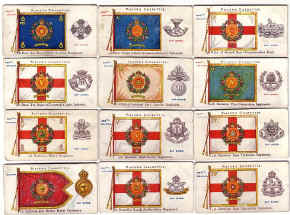 |
|
A group of 24 Colours
& Guidons from the British Army circa 1914. Click
images to enlarge |
|
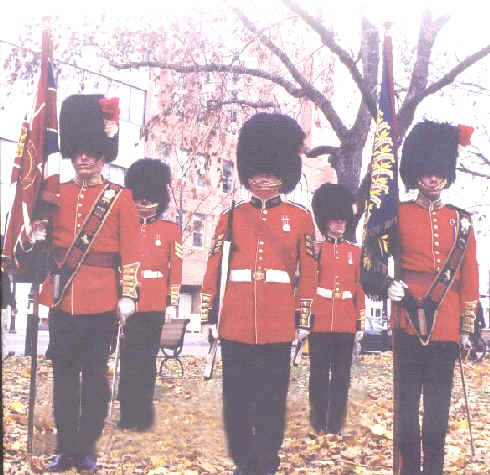
|
|
A Colour Party of the
Royal Regiment of Canada |
for information about
Australian Colours 

|








